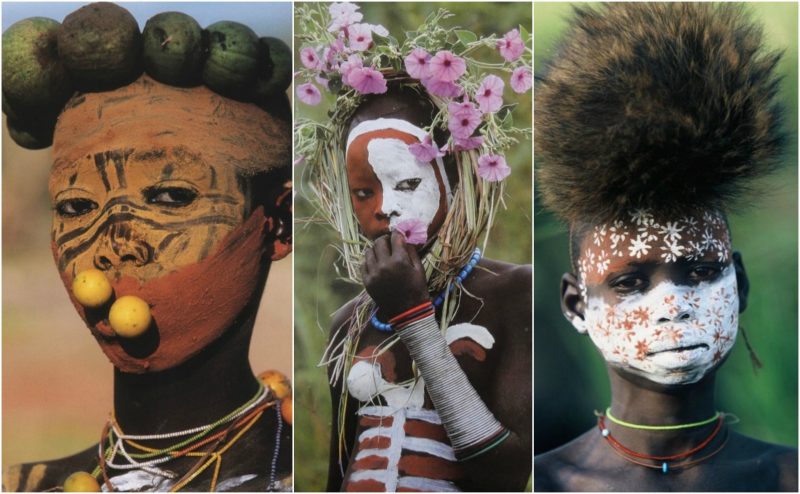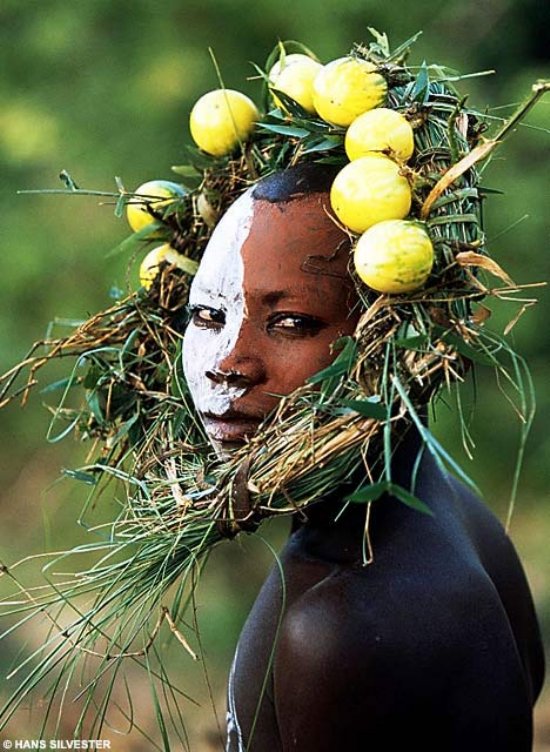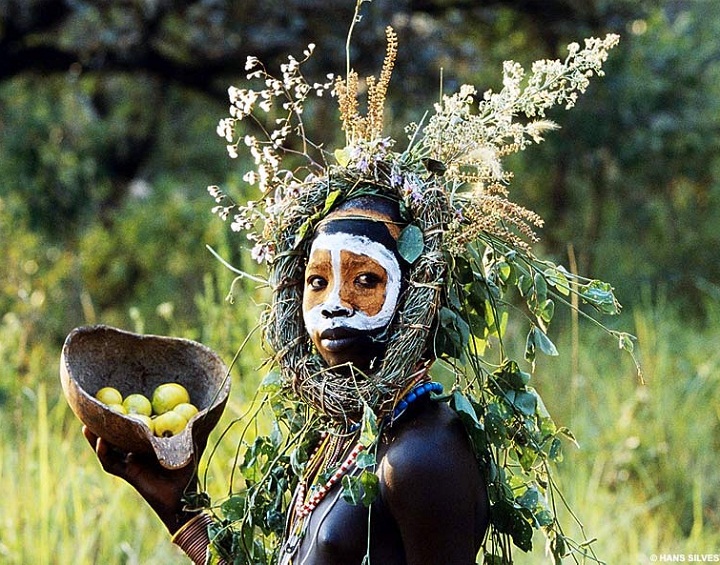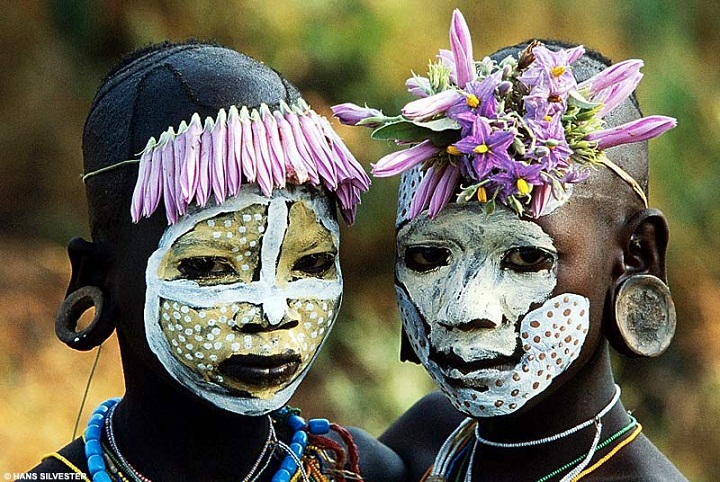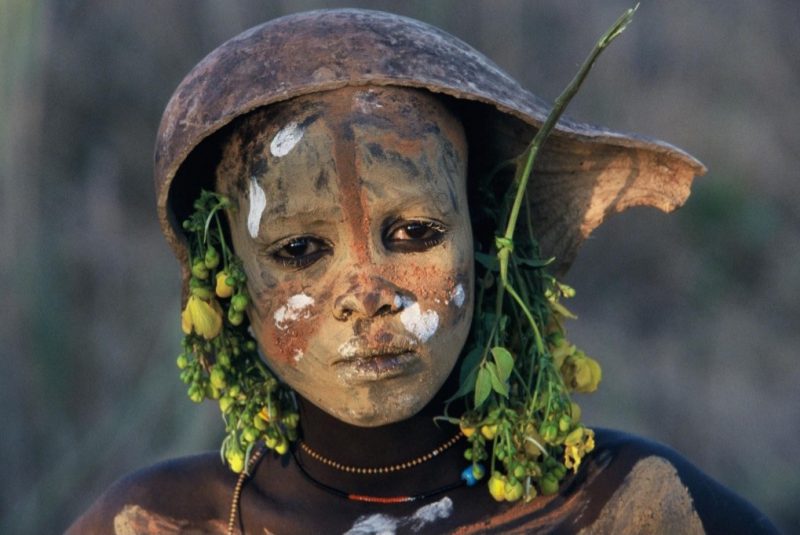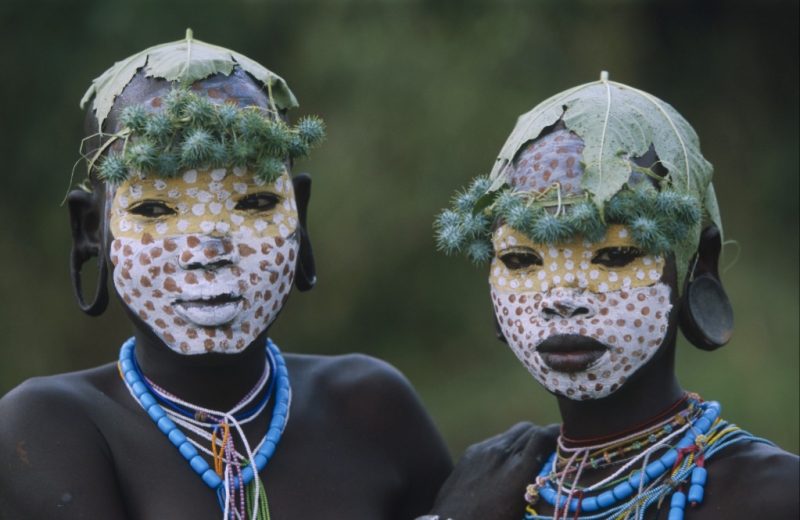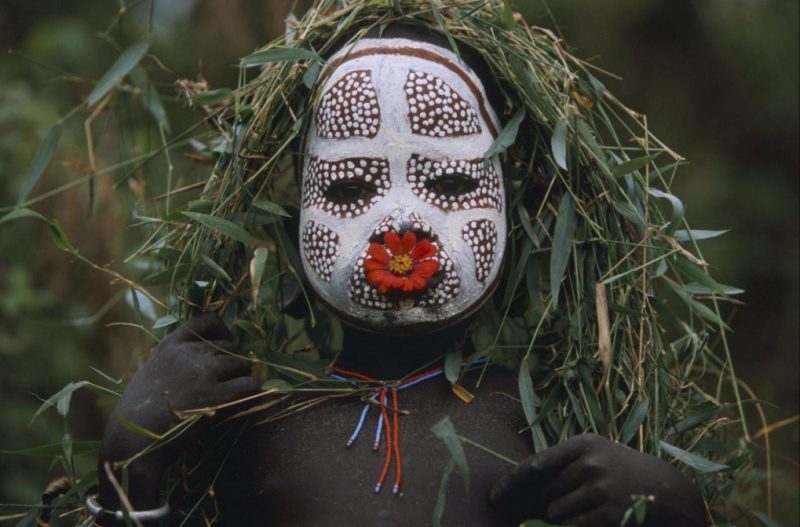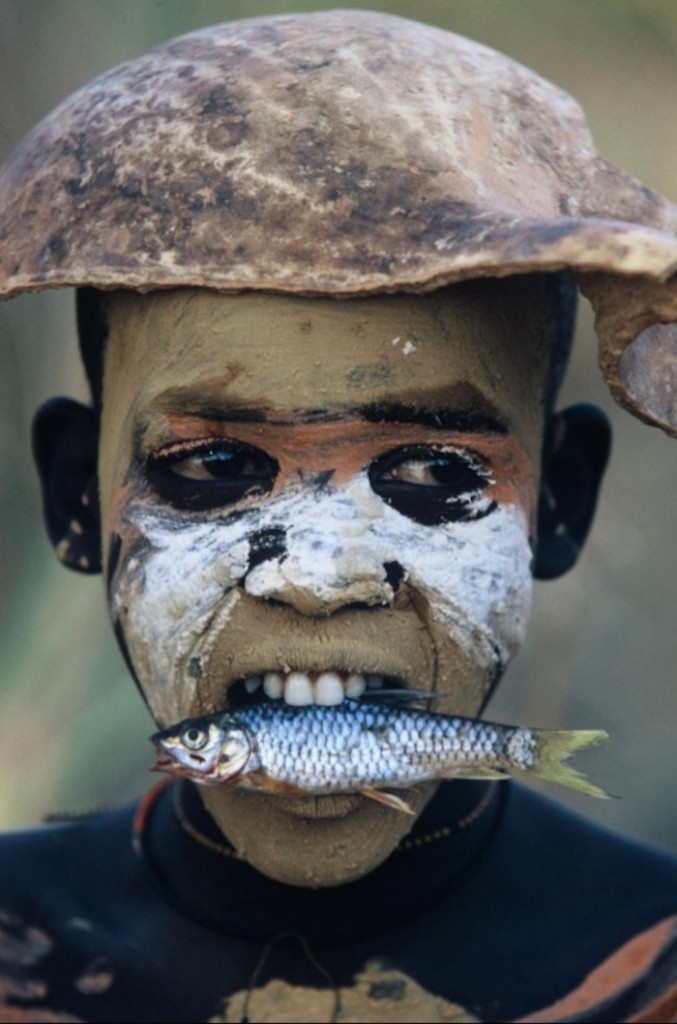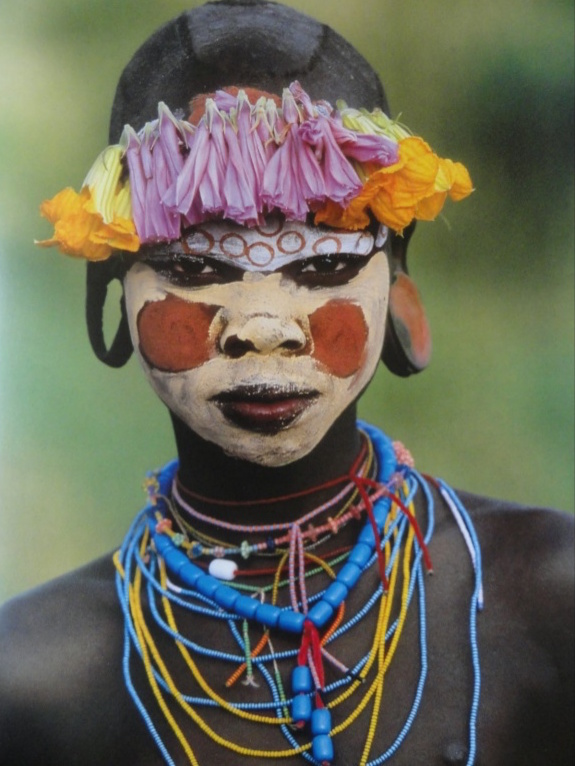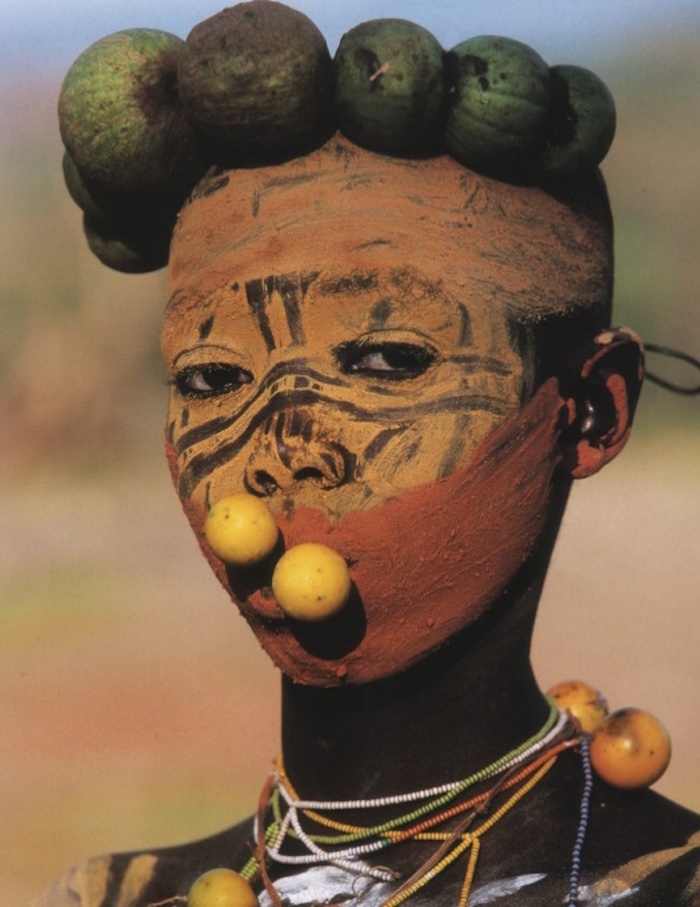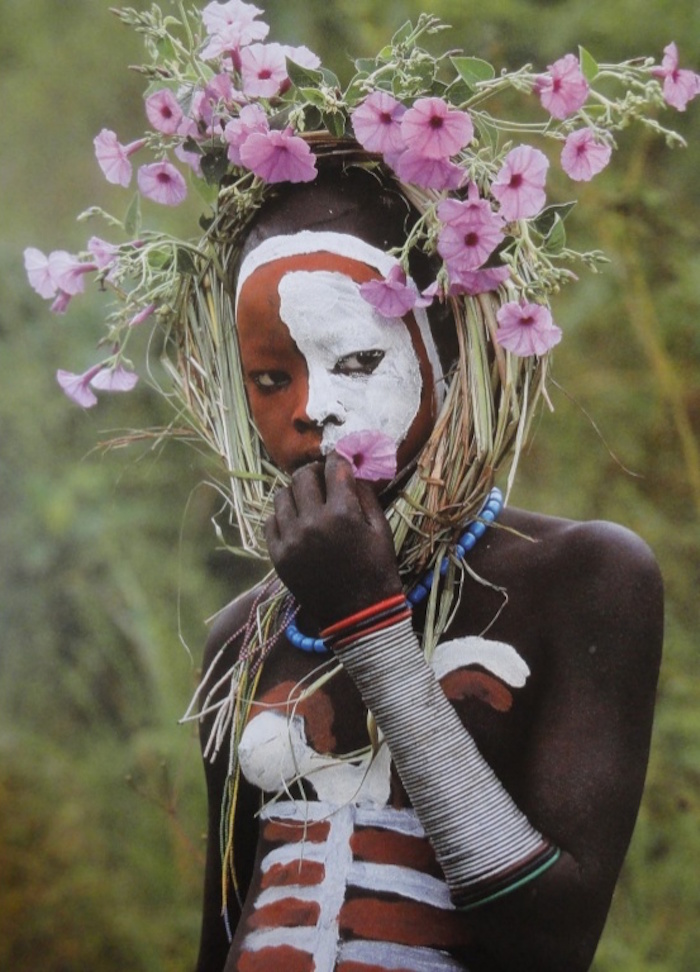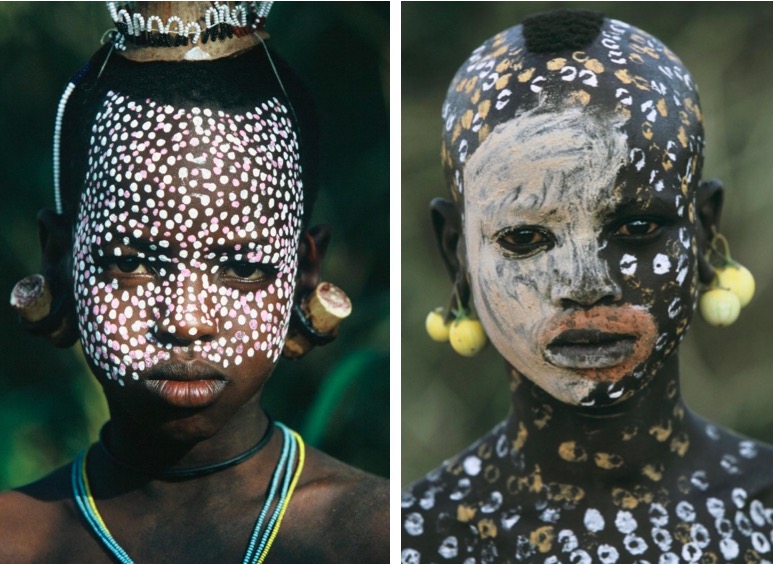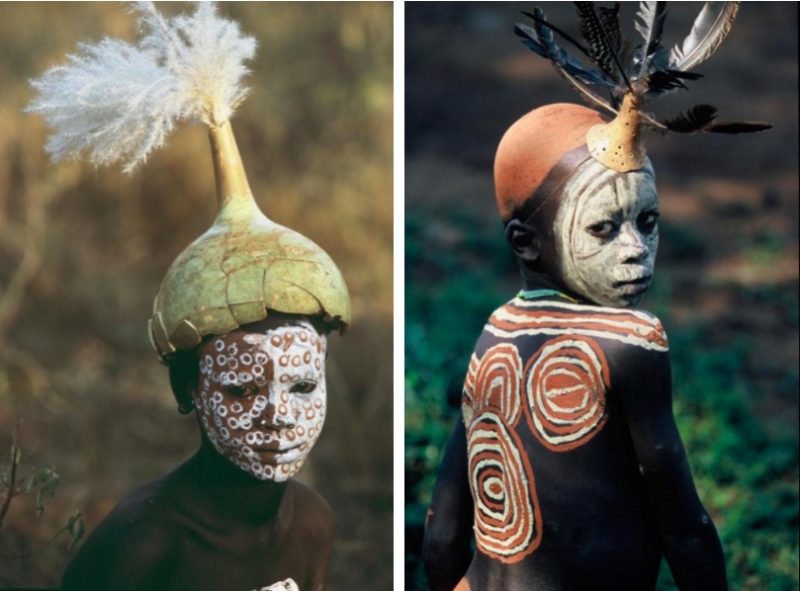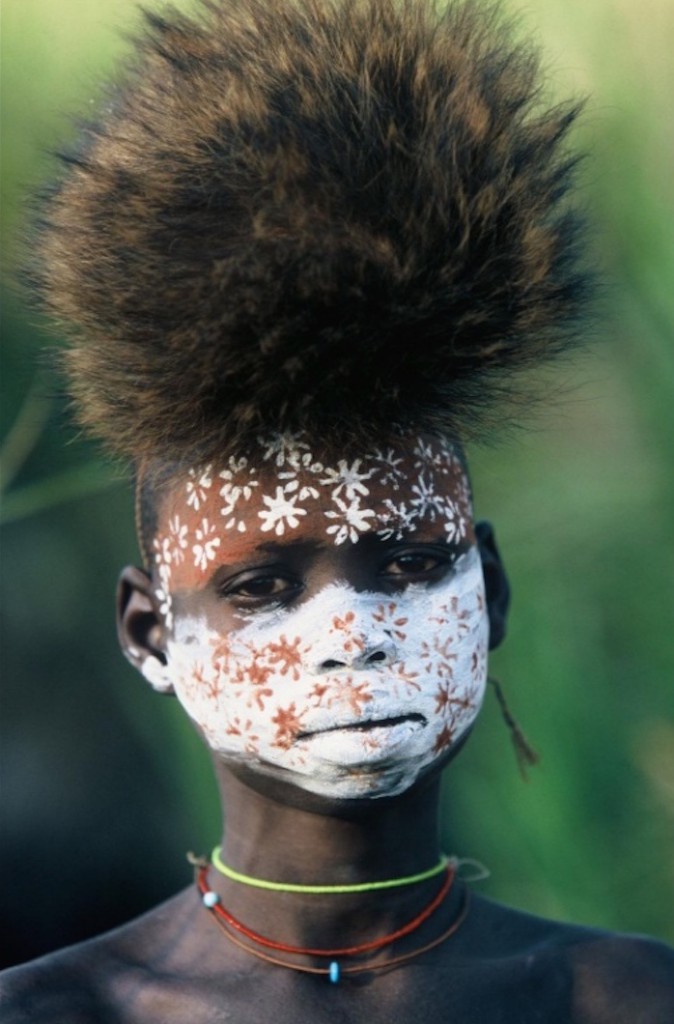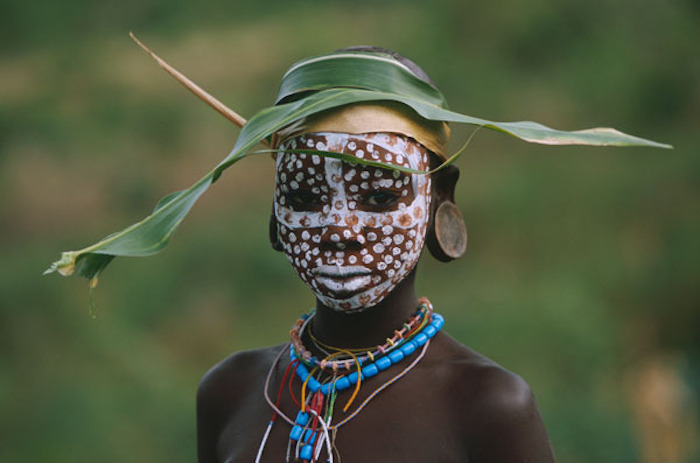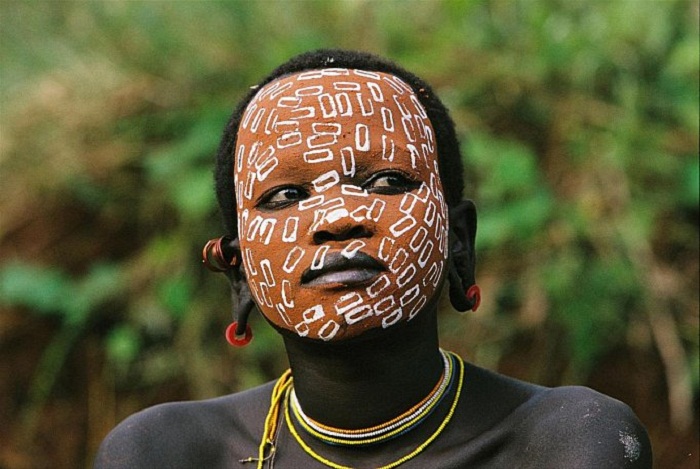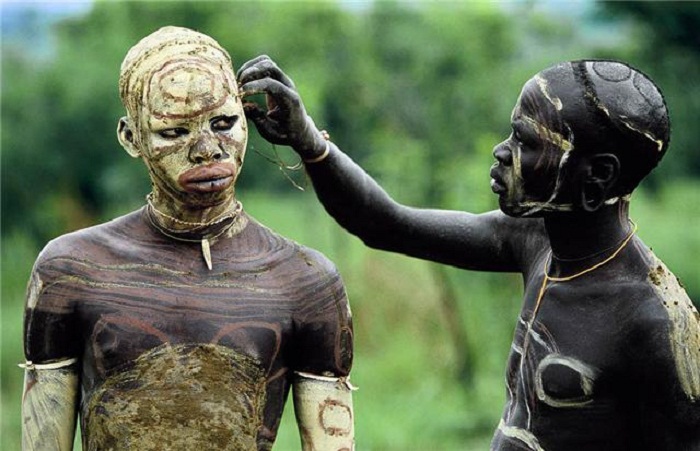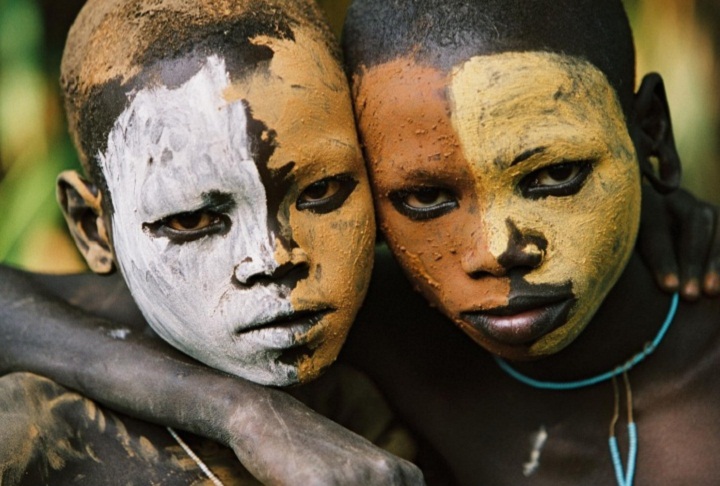It is sad, and a beautiful world. In the remote Omo valley of southern Ethiopia, Africa, where some of the earliest homo sapiens remains were found, beautiful ancient tribes who are basically human canvases and moving art masterpieces, have been living there for centuries.
In the Lower Omo Valley of southwest Ethiopia, eastern South Sudan and around Lake Turkana in Northern Kenya reside over 500,000 indigenous, tribal people. The Surma and Mursi people are part of the Omo Valley tribes and are one of the rarest jewels in the world.
The Surma and Mursi people use the colors of nature, the texture of the animals as an inspiration and use pulverized minerals as materials for their body art. The Mursi have a long history and tradition of body art. Both men and women pierce their ears for discs. They use red ochre, yellow sulfur, white kaolin, white limestone and gray ash, which are common minerals in the area.
There are no mirrors in their region, the affect is in other’s reactions. The boys usually paint one another.
The babies are painted by their mothers, usually they use white paint to help protect a child from the supernatural.
Hans Silvester, a Germany-based photographer and artist with an impressive portfolio documented everything from the ravages of deforestation in the Amazon to the lives of women in the Great Indian Desert.
Silvester, over three years, has nine times visited the Mursi and Surma people. In his photo book Natural Fashion: Tribal Decoration from Africa and Ethiopia: Peoples of the Omo Valley, through stunning photography he depicts their beautiful and rare culture.
“Body painting, as practiced here in East Africa, the cradle of humanity, seems to me to represent a way of life that dates from prehistory and once enabled humankind to overcome the hostility of nature. Art was then a means of survival.” Hans Silvester. –
Take this as a parallel, we use makeup, accessories, fashionable clothes to express ourselves and our status in the modern society, dictated by the fashion industry of what is “hot to wear and what is not”
They use nature-inspired minerals, clay, blocks, flora and fauna, to connect with the spirits and to protect themselves from the environment.
At the beginning of this article, we wrote, it is a sad and beautiful world, and this is why. As civilization encroaches, a tradition and a culture of thousands of years has been contaminated by the outside world.
Automatic weapons have made their way into the Omo Valley through the recent conflicts in Sudan. Now in the Omo Valley, every family owns an AK-47.
Farming and cattle herding have long been the mainstays of tribes in the Ono Valley. Recently the establishment of national parks, hunting concessions, large plantations given to private companies by the government and droughts are causing the tribes to compete for resources and space. This has led to inter-group-conflict.
These tribes who have never been a part of the modern civilization, they don’t know about politics, are now at huge risk. In 2006, Salini Costruttori, an Italian company, started construction work on a massive hydroelectric dam and are forcing the tribes from their land.
As the tribes have no representation, the government will try to force the tribes into resettlement camps and although the government says the plantations will create jobs, it will be a sedantary and restricted lifestyle for a free people so used to living with nature.
Photos by
All Images ©Hans Silvester
Represented by the Marlborough Gallery.
